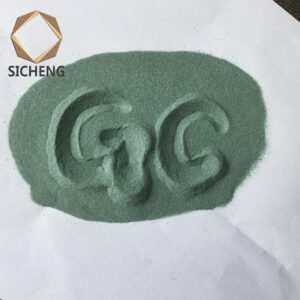Difference between green silicon carbide and white corundum
The manufacturing method of green silicon carbide is the same as that of black silicon carbide, but the raw materials used have higher purity requirements. It is also formed at a high temperature of about 2200°C in a resistance furnace. It is green, translucent, and hexagonal. Its SiC content is higher than that of black. Its physical properties are similar to those of black silicon carbide, but its performance is slightly more brittle than that of black. It also has good thermal conductivity and semiconductor properties. Green silicon carbide and white corundum are two different materials, and they have some differences in composition, properties and applications.
1. Composition: Green silicon carbide is a compound composed of carbon and silicon elements, with a chemical formula of SiC. White corundum is a high-purity aluminum oxide crystal composed of aluminum oxide (Al2O3).
2. Structure: Green silicon carbide has a crystal structure similar to diamond and has a very high hardness. White corundum has a hexagonal crystal structure and also has a high hardness.
3. Physical properties: Green silicon carbide has excellent high temperature resistance and can maintain good stability under high temperature environment. It also has high hardness, wear resistance and chemical stability. White corundum also has high hardness and wear resistance, but its high temperature resistance is poorer than that of green silicon carbide.
4. Application: Due to the excellent performance of green silicon carbide, it is often used in industrial applications under high temperature, high pressure, high speed and corrosive environments, such as furnaces, heat exchangers, ceramic knives, etc. White corundum is often used in abrasives, grinding materials, ceramic products, high temperature insulation materials and other fields.
In general, green silicon carbide and white corundum have some differences in composition, structure, properties and applications, so it is necessary to select the appropriate material according to its characteristics in specific usage scenarios.


